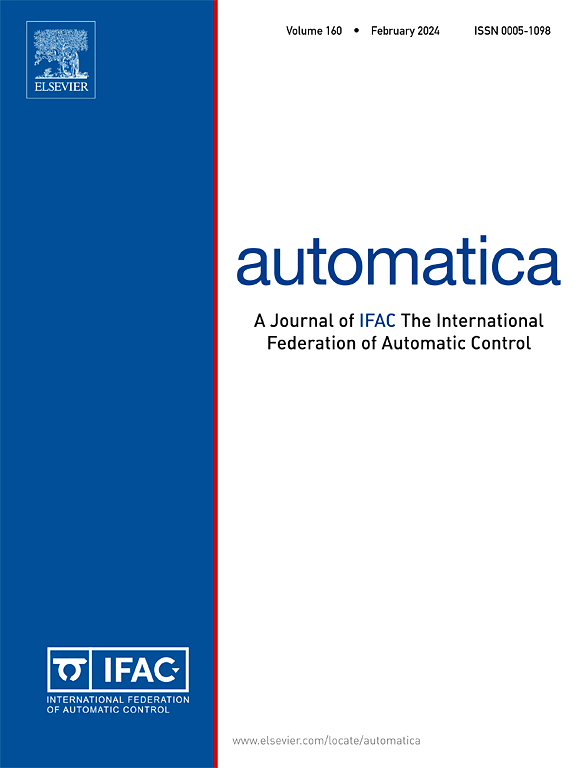Efficient iterative learning model predictive control for uncertain nonlinear discrete-time systems
IF 4.8
2区 计算机科学
Q1 AUTOMATION & CONTROL SYSTEMS
引用次数: 0
Abstract
This work focuses on the iterative learning model predictive control (ILMPC) design for nonlinear discrete-time batch systems. Different from the existing results, a novel efficient two-dimensional (2-D) ILMPC approach is firstly proposed based on the 2-D system theory, which is able to guarantee the tracking performance with lower computation load. Furthermore, based on the newly established event-triggered mechanisms, an event-triggered 2-D ILMPC is developed to reduce the occupation of the network resources while ensuring the tracking performance. For the proposed ILMPC schemes, the sufficient conditions for the tracking performance are provided explicitly by employing the linear matrix inequalities (LMI) techniques. Finally, the effectiveness of the proposed ILMPC strategies are demonstrated through numerical simulations.
不确定非线性离散系统的高效迭代学习模型预测控制
本文主要研究非线性离散批处理系统的迭代学习模型预测控制(ILMPC)设计。与已有的结果不同,本文首次提出了一种基于二维系统理论的新型高效二维ILMPC方法,该方法能够在较低的计算量下保证H∞跟踪性能。此外,基于新建立的事件触发机制,开发了一种事件触发的二维ILMPC,以减少网络资源的占用,同时保证H∞跟踪性能。对于所提出的ILMPC方案,利用线性矩阵不等式(LMI)技术明确地提供了H∞跟踪性能的充分条件。最后,通过数值模拟验证了所提ILMPC策略的有效性。
本文章由计算机程序翻译,如有差异,请以英文原文为准。
求助全文
约1分钟内获得全文
求助全文
来源期刊

Automatica
工程技术-工程:电子与电气
CiteScore
10.70
自引率
7.80%
发文量
617
审稿时长
5 months
期刊介绍:
Automatica is a leading archival publication in the field of systems and control. The field encompasses today a broad set of areas and topics, and is thriving not only within itself but also in terms of its impact on other fields, such as communications, computers, biology, energy and economics. Since its inception in 1963, Automatica has kept abreast with the evolution of the field over the years, and has emerged as a leading publication driving the trends in the field.
After being founded in 1963, Automatica became a journal of the International Federation of Automatic Control (IFAC) in 1969. It features a characteristic blend of theoretical and applied papers of archival, lasting value, reporting cutting edge research results by authors across the globe. It features articles in distinct categories, including regular, brief and survey papers, technical communiqués, correspondence items, as well as reviews on published books of interest to the readership. It occasionally publishes special issues on emerging new topics or established mature topics of interest to a broad audience.
Automatica solicits original high-quality contributions in all the categories listed above, and in all areas of systems and control interpreted in a broad sense and evolving constantly. They may be submitted directly to a subject editor or to the Editor-in-Chief if not sure about the subject area. Editorial procedures in place assure careful, fair, and prompt handling of all submitted articles. Accepted papers appear in the journal in the shortest time feasible given production time constraints.
 求助内容:
求助内容: 应助结果提醒方式:
应助结果提醒方式:


